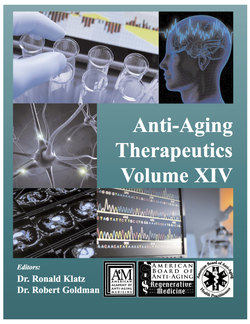Читать книгу Anti-Aging Therapeutics Volume XIV - A4M American Academy - Страница 31
На сайте Литреса книга снята с продажи.
INTRODUCTION
ОглавлениеTestosterone replacement therapy (TRT) has proven to be a valuable option in bioidentical hormone replacement therapy since its inception. All physicians who prescribe testosterone are familiar with commonly used form of testosterone. Transdermal and injectable forms (cypionate, the longer acting enanthate, and others) dominate the list of therapeutic options. While some still prescribe oral testosterone, its use is more controversial due to the familiar problems with orally administered sex hormones – second pass hepatic metabolism altering what reaches the cellular receptors, among other caveats. Continuous testosterone delivered by subcutaneous implant has been safely used in women since 1938 and until recently, was the only licensed form of testosterone for women in England.
In the 1990’s and thereafter Dr. Edward Lichten, an extensively published Michigan gynecologist, bioidentical hormone specialist and a long-time member of A4M’s teaching faculty, has touted testosterone pellet implantation for men and women as a potentially better option for TRT. Among the many studies done on the benefits and safety of pellets, Dr. Lichten emphasized the benefits for diabetic patients, as testosterone pellets appear to enhance insulin sensitivity, improving diabetic control. He also showed that testosterone pellet implantation (TPI) improved circulation in these patients. Moreover his experience convinced him that pellets were superior to other forms of TRT.
Over the past 10 years or so one of the major champions of TPI therapy has been Dr. Rebecca Glaser, an Ohio surgeon. Her practice used to focus on breast cancer but evolved to pellet therapy combined with the use of other bioidentical hormones given vaginally. Dr. Glaser first trained me in the procedure in 2009.
However, despite these two physicians’ effort to expose their colleagues to TPI therapy the general recognition of this safe and remarkably effective from of TRT has been limited. Furthermore, knowledge of its use and relevant clinical and scientific studies, as well as knowledge of training venues to allow interested practitioners to learn how to use TPI has been lacking. At the December, 2012 A4M national conference in Las Vegas where I spoke on TPI, many well trained anti-aging physicians came up to me after my presentation and told me they have never heard of it, or if they have they are in the dark as to its benefits and safety. This article is designed to familiarize health practitioners with TPI and encourage them to consider adding it to their therapeutic armamentarium.
